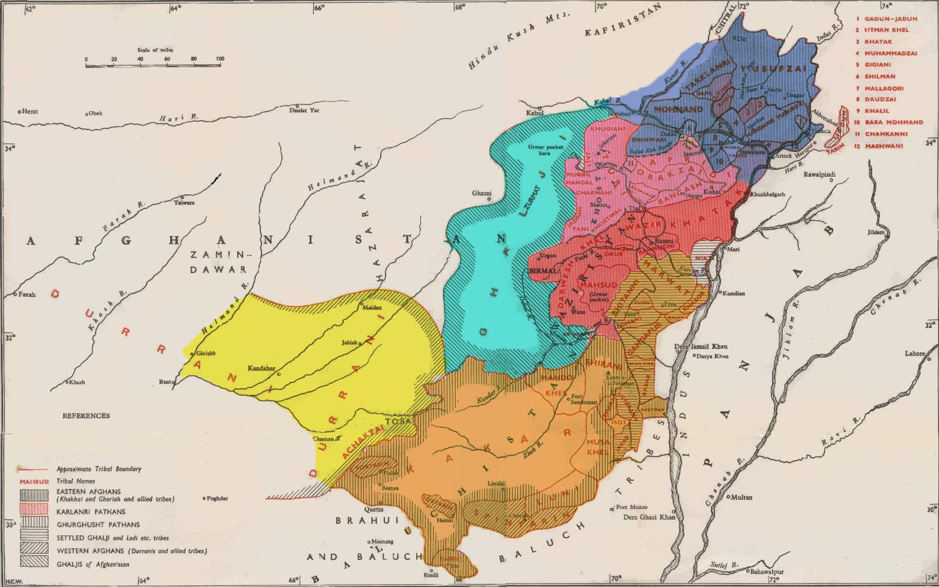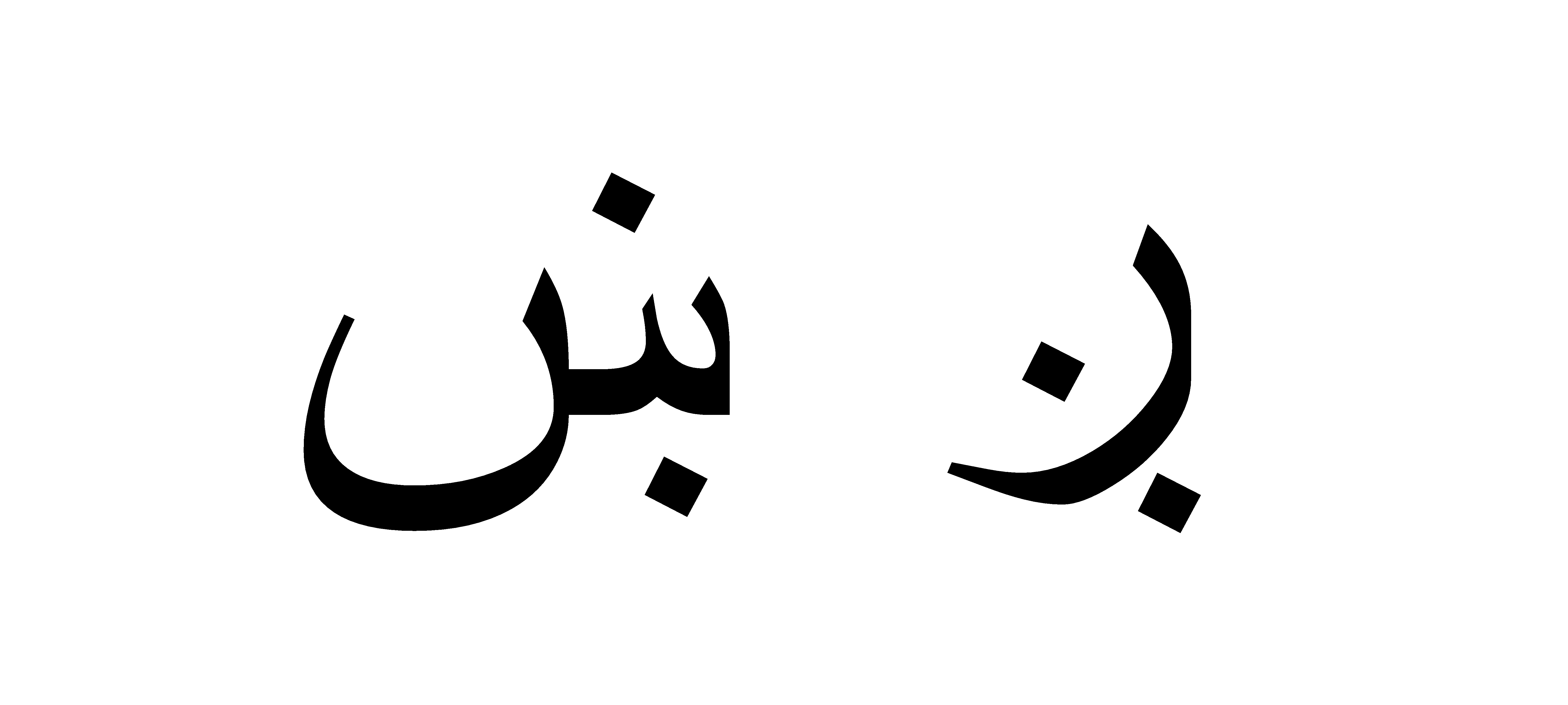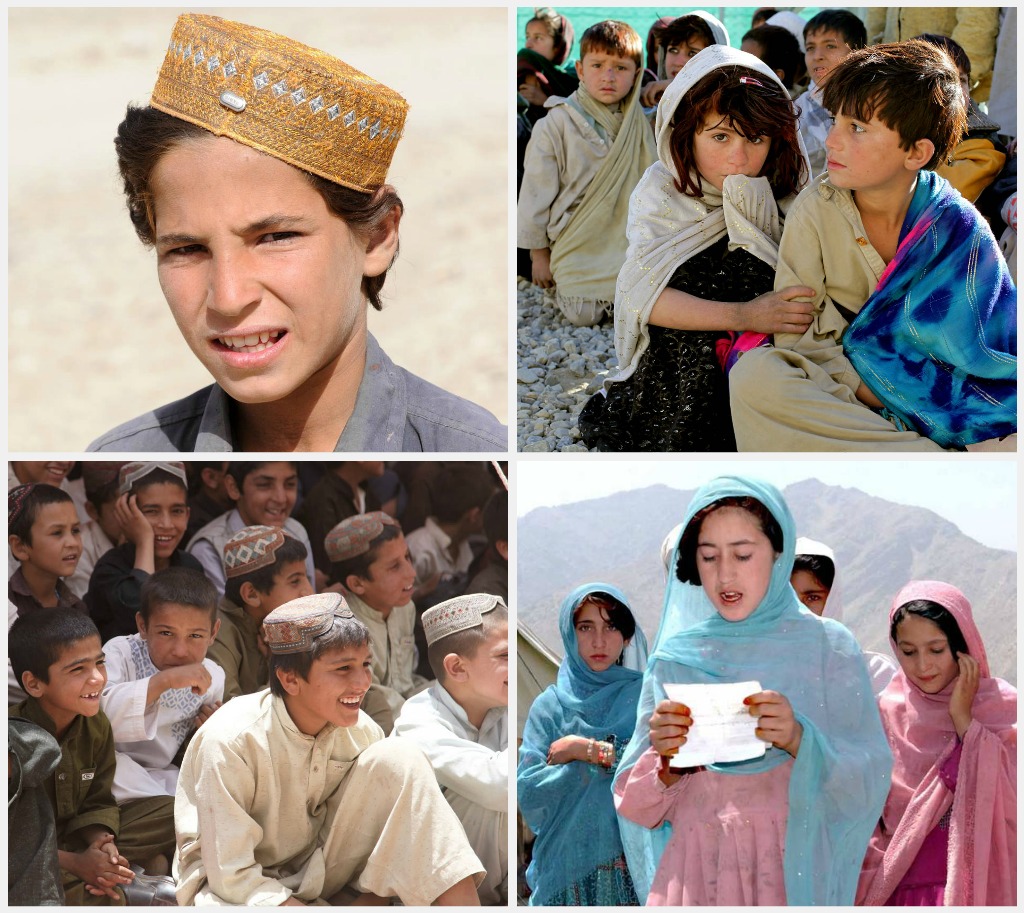|
Pashto
Pashto ( , ; , ) is an eastern Iranian language in the Indo-European language family, natively spoken in northwestern Pakistan and southern and eastern Afghanistan. It has official status in Afghanistan and the Pakistani province of Khyber Pakhtunkhwa. It is known in historical Persian literature as Afghani (). Spoken as a native language mostly by ethnic Pashtuns, it is one of the two official languages of Afghanistan alongside Dari, Constitution of Afghanistan ŌĆ''Chapter 1 The State, Article 16 (Languages) and Article 20 (Anthem)''/ref> and it is the second-largest provincial language of Pakistan, spoken mainly in Khyber Pakhtunkhwa and the northern districts of Balochistan. Likewise, it is the primary language of the Pashtun diaspora around the world. The total number of Pashto-speakers is at least 40 million, (40 million) although some estimates place it as high as 60 million. Pashto is "one of the primary markers of ethnic identity" amongst Pashtuns. Geograph ... [...More Info...] [...Related Items...] OR: [Wikipedia] [Google] [Baidu] |
Pashtuns
Pashtuns (, , ; ;), also known as Pakhtuns, or Pathans, are an Iranian peoples, Iranic ethnic group primarily residing in southern and eastern Afghanistan and northwestern Pakistan. They were historically also referred to as Afghan (ethnonym), Afghans until 1964 after the term's meaning had become a demonym for all citizens of Afghanistan regardless of their ethnic groups in Afghanistan, ethnic group. The Pashtuns speak the Pashto, Pashto language, which belongs to the Eastern Iranian languages, Eastern Iranian branch of the Iranian languages, Iranian language family. Additionally, Dari serves as the second language of Pashtuns in Afghanistan, while those in Pakistan speak Urdu and English. In India, the majority of those of Pashtun descent have lost the ability to speak Pashto and instead speak Hindi and other regional languages. There are an estimated 350ŌĆō400 Pashtun tribes, Pashtun tribes and clans with a Theories of Pashtun origin, variety of origin theories. In 2021 ... [...More Info...] [...Related Items...] OR: [Wikipedia] [Google] [Baidu] |
Pashto Dialects
Pashto dialects ( d╔Ö P╔Öx╠īt├│ ┼ŠėÖbg├│ß╣Łi) can be divided into two large varieties: Northern Pashto and Southern Pashto. Each of the two varieties of Pashto is further divided into a number of dialects. Northern Pashto is spoken in eastern Afghanistan, and central, northern and eastern Khyber Pakhtunkhwa (including Peshawar). Southern Pashto is spoken to the south of it, in southern and western Afghanistan (including Kandahar), southern Khyber Pakhtunkhwa and northern Balochistan (including Quetta). 'Ethnologue' divides Pashto into Northern, Southern and Central Pashto, and Wanetsi. Overview According to David Neil MacKenzie, a consonant shift took place in the northern parts of Pashtunistan in several phases in the medieval era. During the shift, the retroflex fricative ''ß╣Ż╠ī'' changed to ''x╠ī'' or to ''x'' , while ''ß║ō╠ī'' changed to ''ŪĄ'' or to ''g'' . That is supported by the linguist Georg Morgenstierne's assertion that the Pashto script developed in th ... [...More Info...] [...Related Items...] OR: [Wikipedia] [Google] [Baidu] |
Pashto Alphabet
The Pashto alphabet () is the right-to-left script, right-to-left abjad-based alphabet developed from the Persian alphabet, Perso-Arabic script, used for the Pashto, Pashto language in Pakistan and Afghanistan. It originated in the 16th century through the works of Pir Roshan. Form Pashto is written in the Arabic Naskh (script), Naskh. Pashto uses all 28 letters of the Arabic alphabet, and shares 3 letters (, , and ) with Persian alphabet, Persian in the additional letters. Differences from Persian alphabet Pashto has several letters which do not appear in the Persian alphabet, which are shown in the table below: All the additional characters are derived from existing Arabic letters by adding diacritics; for example, the consonants ''x╠ī─½n/ß╣Ż╠ī─½n'' and ''ŪĄe/ß║ō╠īe'' look like Arabic's ''s─½n'' and ''re'' respectively with a dot above and beneath. Similarly, the letters representing retroflex consonants are written with a small circle (known as a "panßĖŹak", "─¤aß╣øw ... [...More Info...] [...Related Items...] OR: [Wikipedia] [Google] [Baidu] |
Wanetsi
Waß╣ćetsi (), commonly called Tar─½no (), and sometimes Tsalgari (), is a distinct variety of Pashto dialects, Pashto and is considered by some to be a different language. In some cases, Wanetsi shares similarities with the Pamir languages, Pamir language of Munji language, Munji, being a sort of bridge between the former and Pashto. It is perhaps a representation of a more archaic, or very early, form of Pashto. It is spoken by the Tareen in Balochistan, Pakistan, primarily in Harnai District, Harnai (┘ćž▒┘垦█ī) (Harnai District) and Chawter (┌å┘łž¬█Éž▒) area in Sanjawi Tehsil, Sanjawi, Northern Balochistan, Pakistan, Balochistan, Pakistan. The language is at risk due to lack of attention and not liking it as a language by foreigners. History Professor Prods Oktor Skjaervo, Prods Oktor Skj├”rv├Ė states: According to Encyclop├”dia Iranica Waß╣ćetsi branched off from the other Pashto dialects in the Middle Iranian stage: Research The first known linguistic research wa ... [...More Info...] [...Related Items...] OR: [Wikipedia] [Google] [Baidu] |
Central Pashto
Central Pashto () is a standard variety of the Pashto language, spoken in parts of Pakistan and Afghanistan. They are the middle dialects of Mangal, Zadran, Mahsudi and Waziri. These dialects are affected by what Ibrahim Khan terms as "the Great Karl─üß╣ć Vowel Shift". Here is a comparison of Middle Dialects with South Eastern: Northern Zadrani Daniel Septfonds provides the following example: Vowel Shift In ┼╣adr─üß╣ći, a vowel shift like Waziri has been noted: * Apridi Afridi/Apridi is also categorised as a Northern Phonology. Vowel Shift There is presence of the additional vowels close-mid central rounded vowel / ╔Ą/ and open back rounded vowel / ╔Æ╦É / in Apridi. The following vowel shift has been noted by Jdosef Elfenbein: * The Open_front_unrounded_vowel.html" ;"title="nowiki/> ╔æ">Open front unrounded vowel">ain Pashto can become ╔æ and also [Mid front unrounded vowel">e">nowiki/>Open back unrounded vowel">╔æ and also [Mid front unrounded vowel">ein ... [...More Info...] [...Related Items...] OR: [Wikipedia] [Google] [Baidu] |
Southern Pashto
Southern Pashto () is a standard variety of the Pashto language spoken in southeastern Afghanistan, and northern parts of the Pakistani province of Balochistan, comprising the Southwestern and Southeastern dialects of Pashto. South Western Kandah─ür├Ł Pasht├│ (), also known as, Southwestern Pashto, is a Pashto dialect, spoken in southern and western Afghanistan, including the city of Kandahar. Kandahari Pashto is spoken in Kandahar, Helmand, Ghazni, most of Urozgan, Farah, Faryab and Nimruz, southeastern Ghor, the districts of Murghab, Ghormach, Muqur, and Jawand in Badghis, and parts of Zabul, Paktika, and Herat provinces of Afghanistan. It is also spoken in parts of the provinces of Razavi Khorasan and South Khorasan in Iran, where they numbered roughly 120,000 (in 1993). It is one of the most archaic varieties of Pashto: the Kandahari dialect retains archaic retroflex sibilants, and (in other dialects, they have shifted to ╩ā/x and ╩Æ/g). Kandahari also ... [...More Info...] [...Related Items...] OR: [Wikipedia] [Google] [Baidu] |
Pashtun Diaspora
Pashtun diaspora () comprises all ethnic Pashtuns. There are millions of Pashtuns who are living outside of their traditional homeland of Pashtunistan, a historic region that is today situated over parts of Afghanistan and Pakistan. While the (erstwhile) Pashtunistan is home to the majority of Pashtun people, there are significant local Pashtun diaspora communities scattered across the neighbouring Pakistani provinces of Sindh and Punjab, Pakistan, Punjab, particularly in their respective provincial capital cities of Karachi and Lahore. Additionally, people with Pashtun ancestry are also found across India; particularly in Rohilkhand, a region in the Indian state of Pathans of Uttar Pradesh, Uttar Pradesh; and in the Indian states of Pathans of Gujarat, Gujarat and Rajasthan. Outside of South Asia, significant Pashtun diaspora communities are found in the Arab states of the Persian Gulf (primarily in the United Arab Emirates), the United States, the United Kingdom, Netherlands, I ... [...More Info...] [...Related Items...] OR: [Wikipedia] [Google] [Baidu] |
Northern Pashto
Northern Pashto () is a standard variety of the Pashto language spoken in the northern and central parts of the Pakistani province of Khyber Pakhtunkhwa, and central-eastern Afghanistan, comprising the Northwestern and Northeastern dialects of Pashto. North Eastern Northeastern Pashto, is spoken primarily in the Khyber-Pakhtunkhwa province of Pakistan Pakistan, officially the Islamic Republic of Pakistan, is a country in South Asia. It is the List of countries and dependencies by population, fifth-most populous country, with a population of over 241.5 million, having the Islam by country# .... Yusapzai Yusufzai/Yusapzai Pashto is the most-spoken subdialect in the Northeastern Dialect. Comparison: Lexical Variation Even within the Yusapzai dialect; regional lexical variation is noted; as pointed out by Dr. Muhammad Ali Kaleem: = Sub-regional lexical variation = Even with regions there can be minor differences in pronunciation. Example: North Western The ... [...More Info...] [...Related Items...] OR: [Wikipedia] [Google] [Baidu] |
Languages Of Pakistan
Pakistan is a List of multilingual countries and regions, multilingual country with over 70 languages spoken as first languages. The majority of Pakistan's languages belong to the Indo-Iranian languages, Indo-Iranian group of the Indo-European languages, Indo-European language family. Urdu is the national language and the ''lingua franca'' of Pakistan, and while sharing official status with English, it is the preferred and dominant language used for inter-communication between different ethnic groups. Numerous regional languages are spoken as first languages by Pakistan's various ethnolinguistic groups. According to the 2023 Census of Pakistan, 2023 census, languages with more than a million speakers each include Punjabi language, Punjabi, Pashto, Sindhi language, Sindhi, Saraiki language, Saraiki, Urdu, Balochi language, Balochi, Hindko, Brahui language, Brahui and the Kohistani languages. The census excludes data from Gilgit-Baltistan, Gilgit Baltistan and Azad Kashmir, there ... [...More Info...] [...Related Items...] OR: [Wikipedia] [Google] [Baidu] |
Languages Of Afghanistan
Afghanistan is a linguistically diverse nation with upwards of 40 distinct languages spoken. Dari and Pashto serve as the two main official languages. Dari historically served as the ''lingua franca'' between different ethnic groups, particularly in the north and west and many big cities, while Pashto is the dominant language in the south and east. Dari is spoken by over 75% of the population in Afghanistan, followed by Pashto 48%, Uzbek 11%, English 6%, Turkmen 3%, Urdu 3%, Pashayi 1%, Nuristani 1%, Arabic 1%, and Balochi 1% (2020 est). Data represents the most widely-spoken languages; shares sum to more than 100% because there is much bilingualism in the country and because respondents were allowed to select more than one language. The Turkic languages, Uzbek and Turkmen, as well as Balochi, Pashayi, Nuristani, and Pamiri are the third official languages in areas where the majority speaks them. Both Farsi (Persian) and Pashto are Indo-European languages from the Iran ... [...More Info...] [...Related Items...] OR: [Wikipedia] [Google] [Baidu] |
Pashto Academy
Pashto Academy () is a language regulatory institution based at the University of Peshawar in Peshawar, Khyber Pakhtunkhwa, Pakistan responsible for the standardisation, advancement, and promotion of the Pashto language in Pakistan. It was established in 1955 with the support of the Government of Khyber Pakhtunkhwa, with Maulana Abdul Qadir serving as its first director. It was created following the precedent the Pashto Tolana in Kabul having been set up in 1937. It is a research and publication institution with a focus on Pashto linguistic development and research. Areas studied and researched by the academy include Pashtun culture, literature, history History is the systematic study of the past, focusing primarily on the Human history, human past. As an academic discipline, it analyses and interprets evidence to construct narratives about what happened and explain why it happened. Some t ..., and the arts. Activities Since its inception, the Pashto Academy has produ ... [...More Info...] [...Related Items...] OR: [Wikipedia] [Google] [Baidu] |
Eastern Iranian Languages
The Eastern Iranian languages are a subgroup of the Iranian languages, having emerged during the Iranian languages#Middle Iranian, Middle Iranian era (4th century BC to 9th century AD). The Avestan, Avestan language is often classified as early Eastern Iranian. As opposed to the Middle-era Western Iranian languages, Western Iranian dialects, the Middle-era Eastern Iranian dialects preserve word-final syllables. The largest living Eastern Iranian language is Pashto, with at least 90 million speakers between the Amu Darya, Oxus River in Afghanistan and the Indus River in Pakistan. The second-largest living Eastern Iranian language is Ossetian language, Ossetic, with roughly 600,000 speakers across Ossetia (split between Georgia (country), Georgia and Russia). All other languages of the Eastern Iranian subgroup have fewer than 200,000 speakers combined. Most living Eastern Iranian languages are spoken in a contiguous area: southern and eastern Afghanistan and the adjacent parts of w ... [...More Info...] [...Related Items...] OR: [Wikipedia] [Google] [Baidu] |





